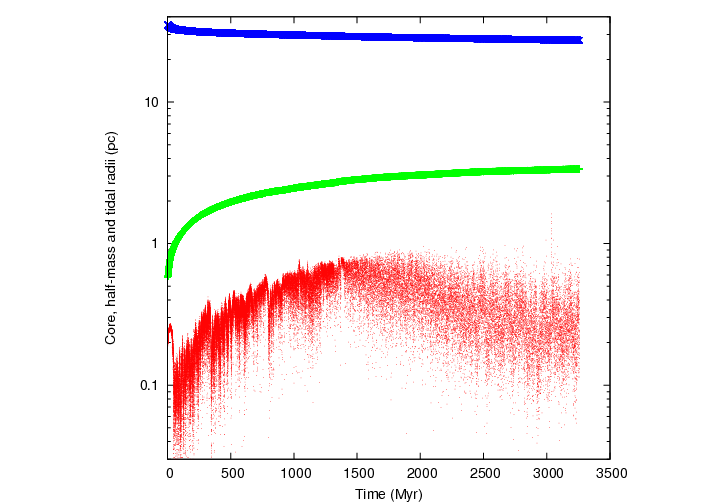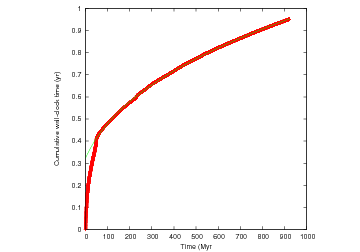
This project started on October 31 2010, to demonstrate the difficulty and interest in performing a star-by-star simulation of a globular cluster. The initial conditions were a realisation of those determined by Heggie & Giersz (2008, MNRAS, 389, 1858). The model uses NBODY6 enabled for use with GPUs (Nitadori & Aarseth 2012, MNRAS, in press)
Estimated total duration of the simulation (6/7/2012)
Now the simulation has reached 3.26 Gyr, and (using the extrapolation described below) I expect it to take another 10 months (finishing in May 2013). This is between the estimates made earlier (see below). The figure below shows the main reasons why the simulation has been speeding up: the radius has increased by a factor of 5, and the total mass has decreased by a factor of 2 (which is related to the decrease of the tidal radius). Note that the frequency of data output was decreased at about 1.5 Gyr.

Black holes in the simulation (updated 24/4/2012)
This figure shows the population of stellar-mass black holes (purple) in the simulation at about 2Gyr. (In fact today it has reached 2.18 Gyr, and I expect it to finish in March 2013.) There are 120 black holes in this frame. Note also the faint tidal extensions.

Estimated total duration of the simulation (updated 26/12/2011)
Today the simulation has reached 920 Myr. Thanks to occasional restarts, downtime, hardware variations, etc, the elapsed wall time is about 0.95 yr (see the figure below). Part of the early phase (up to about 50 Myr, which was the core bounce of the population of stellar-mass black holes) was slow because of a poor choice of regularisation parameters. Thereafter the simulation has been speeding up steadily. The green curve is a power-law fit, from which it can be estimated that the simulation will reach completion after another 1.5yr (June 2013)
